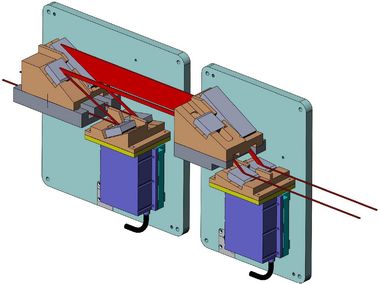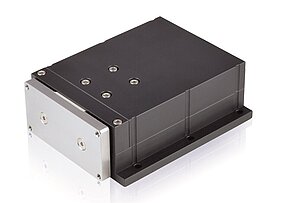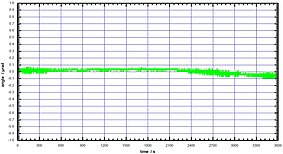High-Precision Bragg and Tilt Angle Adjustment
High-Precision Bragg and Tilt Angle Adjustment
At the ID18 beamline at ESRF, France, a double spectrometer for inelastic X-ray scattering is currently being installed. Phonon excitation states in solid will be investigated with the help of two monochromators that select the desired wavelengths with an energy resolution of 0.5 meV and 2 meV.
Each of the monochromators consists of four independent crystals arranged in pairs. The first pair of crystals collimates the beam, while the second pair selects the beam of the required energy. The width of the respective rocking curves is a few microradian only. To operate in the curve’s maximum, i.e., with maximum intensity, the relative angle of the crystals in both pairs has to be adjusted with a resolution of 0.5 microradian or better.
Precise Readjustment of the Crystals

Precise Readjustment of the Crystals
In addition, users may need a fast characterization of their samples with a moderate resolution of 2 meV and a high flux, and then to select samples for precise measurements with an ultra-high energy resolution of 0.5 meV. This requires a fast exchange of the two monochromators with precise readjustments of the Bragg and tilt angles for all four crystals.
Positioning the Crystals Places Exceptionally High Demands
To adjust the Bragg and tilt angle, the crystals have to be moved and positioned with high precision. Additionally excellent long-term stability and very good repeatability were required, while the stages themselves need to fit into a very limited space.
PI’s proprietary piezo-based PiezoWalk® drives with their sophisticated controller provided a perfect-fit solution. Their excellent resolution of 0.1 µrad only in both Bragg and tilt angle, and a repeatability of <0.1 µrad over a 12 µrad range even exceeded the demands. In combinations with capacitive position feedback sensors they allow for a long-term position stability well under 0.1 microradian, while the stage’s footprint of 95 mm × 78 mm × 32 mm stays very compact.
In a future step, the PI stages’ angular stroke of ±2 mrad will be used to carry out a synchronized motion to vary the energy selection of the X-ray spectrometer beam.



